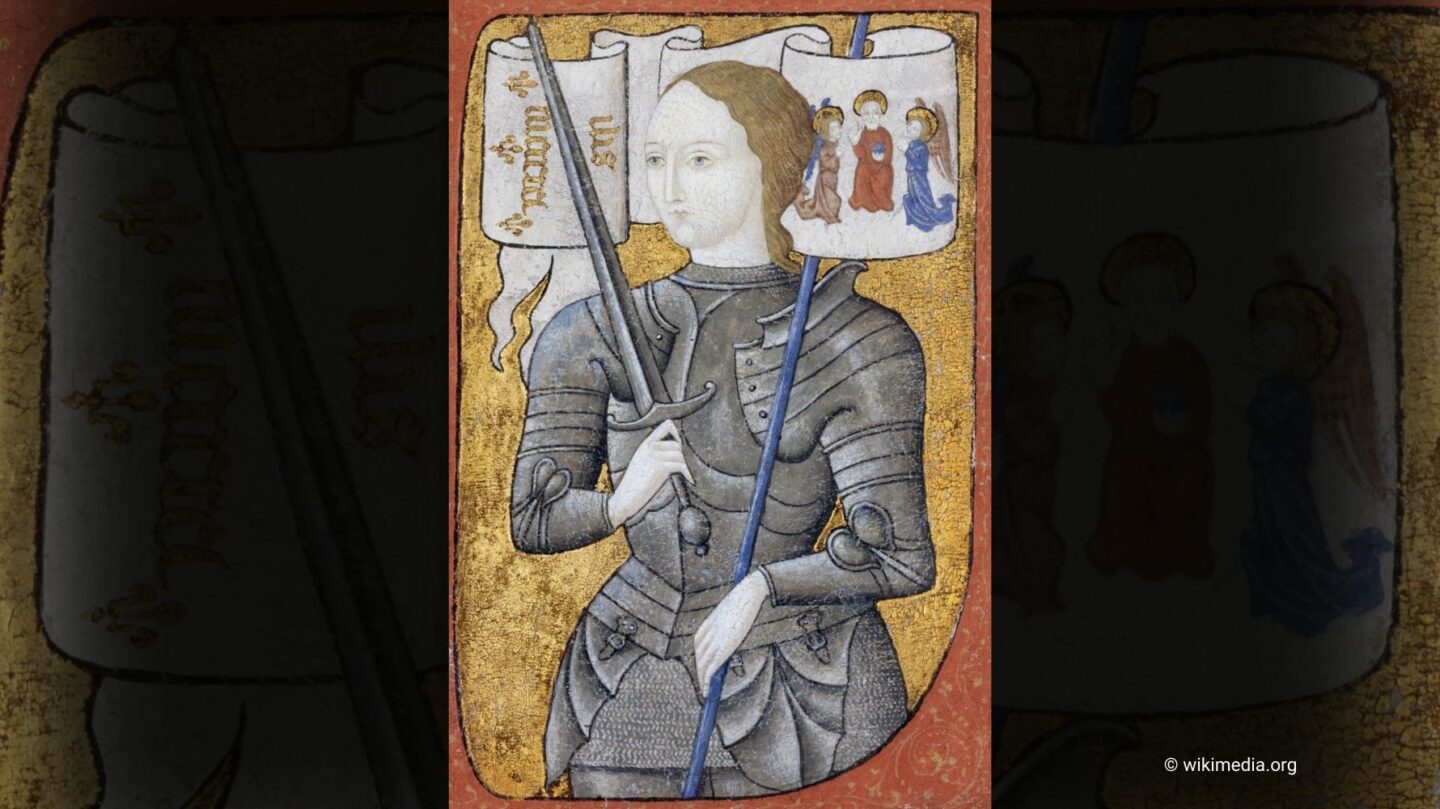A Peasant Girl with a Divine Mission
Joan of Arc, born in 1412 in the small village of Domrémy in northeastern France, was an unlikely hero. Coming from a modest peasant family, she had no formal education or military training. Yet, by the age of 17, she would rise to become a symbol of French resistance during the Hundred Years’ War against England.
Joan claimed to have visions of saints instructing her to lead France to victory and to support Charles VII’s claim to the throne. At a time when women were excluded from positions of power, Joan’s conviction and divine mission set her apart, challenging societal norms and the expectations of her gender.
The Turning Point in the Hundred Years’ War
By the time Joan entered the scene, France was in turmoil. The English, allied with the Burgundians, had captured much of northern France, and the French morale was at its lowest. The Dauphin, Charles VII, was struggling to assert his claim to the throne, with his legitimacy widely questioned.
In 1429, Joan managed to gain an audience with Charles VII. Her confidence and unwavering faith convinced him to give her a chance. She was given command of an army—an extraordinary feat for a teenage girl in a male-dominated military world. Clad in armor and carrying a banner rather than a weapon, Joan led the French forces to a series of victories, the most significant being the lifting of the siege of Orléans. This triumph reinvigorated the French and earned her the nickname “The Maid of Orléans.”
Joan’s victories paved the way for Charles VII’s coronation in Reims, solidifying his claim to the throne and marking a turning point in the war.
Betrayal and Trial
Despite her successes, Joan’s meteoric rise made her many enemies. In 1430, she was captured by the Burgundians during an ambush near Compiègne and sold to the English. The English, eager to undermine her influence and legitimacy, put her on trial for heresy.
The trial was politically motivated and deeply biased. Joan, just 19 years old, was interrogated relentlessly. Despite this, she displayed remarkable intelligence and composure, defending her visions and actions with eloquence. However, she was found guilty of heresy, largely for wearing men’s clothing, which violated Church law. On May 30, 1431, Joan was burned at the stake in Rouen, dying as a martyr for her cause.
Posthumous Vindication
Joan’s death did not mark the end of her story. In the years following her execution, public opinion began to shift. Her role in the French victories was undeniable, and her trial was increasingly seen as unjust. In 1456, a posthumous retrial cleared her name, declaring her innocent and a victim of political manipulation.
Centuries later, Joan of Arc was canonized as a saint by the Catholic Church in 1920. She remains a symbol of courage, faith, and patriotism, celebrated as a national hero in France.
A Legacy of Courage and Change
Joan of Arc’s impact on history is profound. She not only altered the course of the Hundred Years’ War but also shattered traditional notions of what women could achieve. Her story inspires people worldwide, reminding us of the power of faith, resilience, and the belief in a higher purpose. Joan’s life, though tragically short, continues to resonate as a testament to the extraordinary impact one person can have against all odds.
